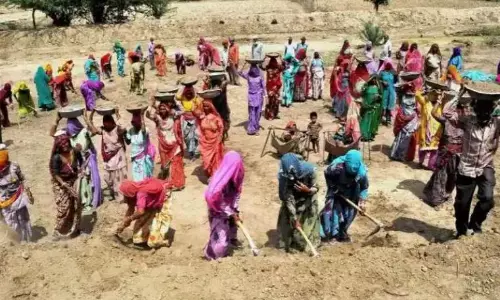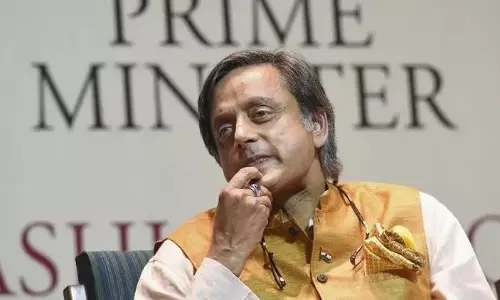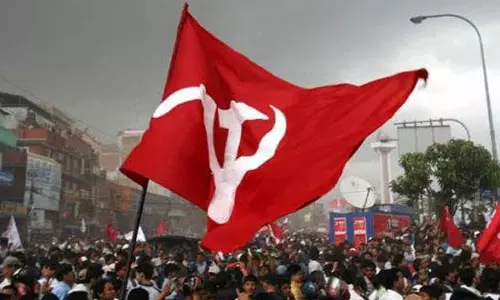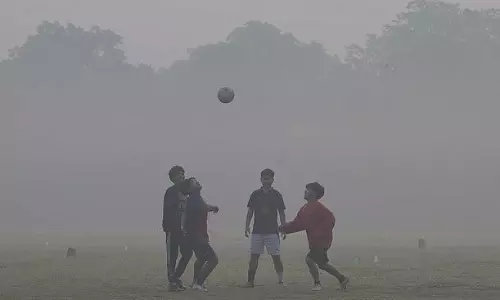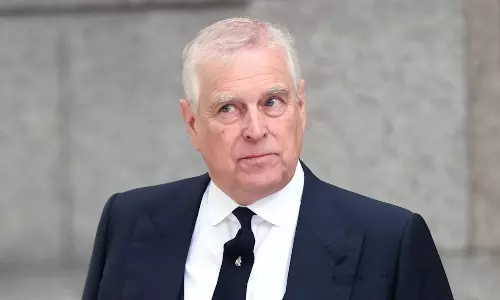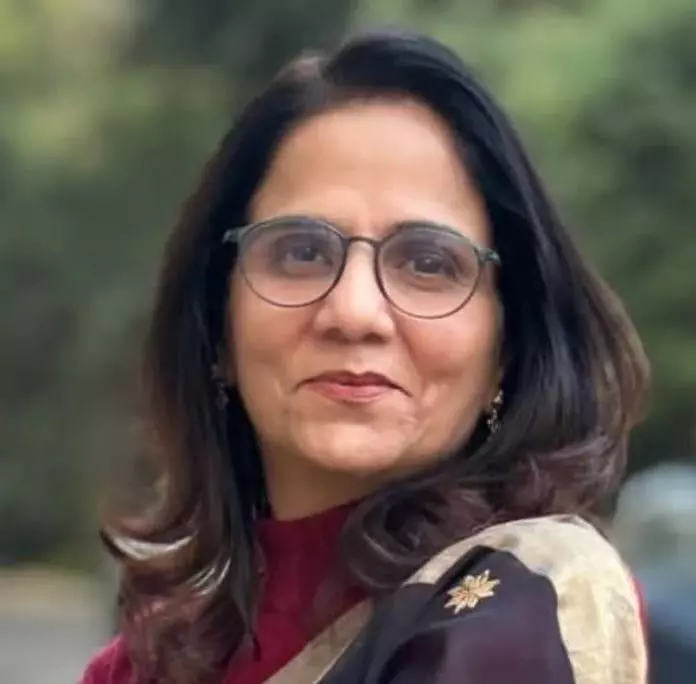
Dialogue at the Crossroads: RSS @ 100 and the Search for 'Samadhan'
text_fieldsOn July 31, 2025, a quiet but potentially significant meeting unfolded in the heart of Delhi. Organised by the Muslim Rashtriya Manch—a minority outreach wing of the Rashtriya Swayamsevak Sangh (RSS)—the event, titled ‘Samvad se Samadhan’ (Dialogue for Solution), brought together around 40 to 50 journalists, mostly from the Urdu press, along with a few exceptions, including this writer—a Hindu and a member of the non-Urdu media.
In a nation where political discourse is increasingly defined by identity fault lines, such a dialogue—especially at a moment when RSS is marking its centenary year—calls for deeper reflection, not just on the significance of the conversation itself, but also on the churning it represents within the ideological core of India's most influential cultural organisation.
A Century of Influence, A Moment of Introspection
The RSS, established in 1925, turns 100 this October. It has grown from a small volunteer-based organisation focused on “Hindu discipline” to a vast cultural force with far-reaching influence on India’s political, social, and educational spheres. Its ideological imprint is particularly visible in the Bharatiya Janata Party (BJP), the ruling political party that often echoes the Sangh's worldview.
To mark this historic milestone, the organisation is set to scale its presence significantly—planning over 1 lakh shakhas, and organising 1,500–1,600 Hindu conferences across the country, according to Delhi RSS leader Anil Gupta. But amid the grand narrative, the July 31 dialogue was different: quieter, more introspective, and focused on a theme rarely associated with the Sangh in public imagination—communal harmony.
‘Samvad se Samadhan’: Sincerity or Strategy?
At the heart of the meeting was Indresh Kumar, senior RSS leader and patron of the Muslim Rashtriya Manch. In a candid and wide-ranging address, Kumar called for a national environment rooted in brotherhood (bhaichara) and solidarity, urging the media to take the lead in fostering reconciliation.
What stood out was not just an attempt at engagement with Muslim voices, but the nature of issues discussed—many of them deeply contentious: cow slaughter, mob lynching, Mandir-Masjid conflicts, and communal polarisation during religious events like the Kanwar Yatra organised annually in North India.
Kumar was unequivocal in his call to end violence in the name of religion. “We need a country,” he said, “where there is no lynching or rioting over cows.” He spoke against vote bank politics and asked all communities to rise above identity-driven partisanship. He questioned the need to find Shivalayas in every mosque, hinting at the ongoing Gyanvapi and Sambhal disputes (reminiscent of an earlier speech of RSS chief Mohan Bhagwat with the same advice to Hindus), and implicitly called for a more reasoned approach to religious history.
Such remarks, especially from a senior RSS leader, are significant. Yet, they also leave space for questions, especially when communal tensions continue to flare up as in the recent incidents of Fatehpur in Uttar Pradesh, over the claim that a 200-year-old tomb, believed to be that of former local ruler Nawab Abdus Samad, was a Hindu temple. Given such realities, it is a pertinent question if such outreach meetings reflect any course correction for the Sangh in its 100th year? Or is it a tactical shift—a recalibration in the face of criticism, social tension, and evolving public sentiment?
The elephant in the room: ground realities
For any such dialogue to be meaningful, it must be weighed against the lived experiences of the communities involved. Despite the outreach, the trust deficit remains high. The Muslim community, in particular, continues to face alienation through acts of vigilante violence, social exclusion, and increasing restrictions on religious expression.
The journalists in attendance— as already indicated, mostly Muslim, many from the Urdu press—were forthright in raising their concerns: forced identity disclosures during the Kanwar Yatra, harassment over public namaz, and lack of police action in cases of mob violence. Several cited the Supreme Court’s endorsement of personal detail disclosures by shop owners in sensitive zones during Hindu religious processions as both shocking and discriminatory.
Even as the Sangh speaks of "belongingness"—a term Mohan Bhagwat, the RSS Sarsanghchalak, recently used to define the organisation’s ethos—it must confront the growing perception that belonging is often framed on majoritarian terms.
Lynching and Justice: Moving Beyond Statements
The dialogue featured an explicit disapproval of violence committed in the name of the cow. But any mention of “samadhan” (solution) is incomplete without acknowledgement of those who have suffered without justice.
Since 2015, India has seen over 50 recorded incidents of mob lynching linked to cow protection, according to multiple human rights reports. Victims like Mohammad Akhlaq, Pehlu Khan, and Junaid have become symbols of the silent terror faced by many in the margins of India’s socio-political fabric.
Can this dialogue serve as a foundation to revisit these cases, deliver long-denied justice, and publicly discourage the ideology that fuels such attacks? Mere statements, however welcome, are not enough unless followed by systemic action and accountability.
Mandir-Masjid and the politics of symbolism
Indresh Kumar’s appeal to stop “looking for Shivalayas in every temple” could be read as a subtle message to the political class and sections of the media. It implies that India’s religious harmony cannot rest on unearthing medieval wounds or triggering communal suspicion through symbolic confrontations.
Yet, incidents like the desecration of mazaars, the distortion of Islamic heritage, and routine accusations without archaeological basis continue, often aided by local authorities. The dialogue, therefore, cannot stop at philosophical statements—it must translate into concrete commitments to protect all religious sites and prosecute those who seek to inflame tensions.
Reimagining nationalism?
One of the more striking themes of the event was the repeated invocation of nationalism above religion. Indresh Kumar stressed that citizens should act not as Hindus or Muslims, but as Bhartiyas—especially in response to international issues such as the Israel-Hamas conflict. While the sentiment may sound unifying, it also risks ignoring the diversity of opinion and empathy that different communities naturally express.
The deeper challenge is not about professing nationalism, but about defining it. If nationalism becomes synonymous with Hindu identity, as some critics argue, then pluralism itself is at stake. For true belongingness to exist, nationalism must be inclusive, secular, and rooted in the constitutional values of equality, fraternity, and justice. Emphasis on 'nationalism' with a significant omission of democracy and constitutional ethos during the 'dialogue', vacuums the entire process. Without the acknowledgement of gaps in constitutional commitment and addressing these, no outreach effort can achieve its purpose.
Belongingness without othering?
As Mohan Bhagwat recently said in Pune, “If RSS is to be described in one word, it would be belongingness.” That sentiment resonates deeply—but it also invites scrutiny. Belongingness, by definition, must include the "other". It cannot be built on the marginalisation or assimilation of minorities into a dominant cultural identity.
A real sense of belonging can only emerge when diversity is celebrated, not tolerated. That includes respecting the right to religious practices, dissenting opinions, and minority cultural expressions without suspicion.
The road ahead: dialogue must become policy
The Delhi meeting was not the first such initiative by the RSS; the Muslim Rashtriya Manch has been hosting dialogues since 2010. But this one comes at a critical time—with the Sangh completing a century and the country grappling with deepening communal fault lines.
If “Samvad se Samadhan” is to be more than symbolic, the following steps are essential:
- Public renunciation of all forms of communal violence, especially in the name of religion or nationalism.
- Clear distancing from hate speech by public figures aligned with the broader Sangh Parivar.
- Justice and reparations for victims of communal attacks.
- Affirmation of constitutional values, especially secularism, as foundational to India’s democracy.
Ultimately, media can indeed be a tool for positive change—as Indresh Kumar acknowledged. But that change requires both truth-telling and accountability. It also requires recognising that real dialogue is not a one-time event but a continuous process of listening, acknowledging, and evolving.
A beginning, not a resolution
The July 31 meeting may not have provided a complete "samadhan", but it offered an opening—a rare, perhaps overdue, gesture of introspection from an organisation that has defined much of India’s political narrative in recent decades.
As RSS steps into its second century, the real test lies not in expanding shakhas or staging conferences, but in demonstrating whether the idea of ‘belongingness’ includes all Indians—equally, unconditionally, and constitutionally.
In the concluding moments of the meeting, Indresh Kumar quoted Allama Iqbal:
“Meer-e-Arab ko aayi thandi hawa jahaan se”
(Wherefrom came the cold wind to the Arab head)—a poetic reference to India, seen as the cradle of spiritual awakening and civilisational harmony.
One can only hope that this “cold wind” of wisdom and reconciliation—emerging from a century-old ideological organisation—signals a shift. A shift away from suspicion and sectarianism, and towards a more inclusive, plural, and empathetic national spirit.
If taken forward in action and not just intention, perhaps this samvad can indeed sow the seeds of samadhan.
(The author is a Delhi-based journalist)




